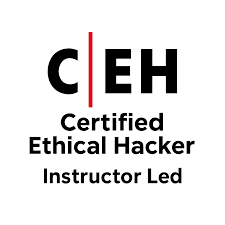Palo Alto Training – Learn Palo Alto Firewalls in 2025

Dans un monde professionnel où les normes internationales régissent de plus en plus la qualité, la sécurité, la gestion des risques et la conformité, les certifications professionnelles sont devenues un levier incontournable de reconnaissance. Parmi les organismes de certification les plus réputés, PECB (Professional Evaluation and Certification Board) s’impose par sa rigueur, sa reconnaissance internationale […]

Dans un monde professionnel où les normes internationales régissent de plus en plus la qualité, la sécurité, la gestion des risques et la conformité, les certifications professionnelles sont devenues un levier incontournable de reconnaissance. Parmi les organismes de certification les plus réputés, PECB (Professional Evaluation and Certification Board) s’impose par sa rigueur, sa reconnaissance internationale et la qualité de son processus de certification. Mais comment devenir certifié PECB ? Quels sont les prérequis, les étapes à suivre, et les bonnes pratiques à adopter ? Dans cet article, on vous guide pas à pas à travers le processus de certification PECB.
La première étape consiste à identifier la norme ISO (ou autre référentiel) qui correspond à votre domaine d’expertise ou à vos objectifs professionnels. PECB propose des certifications dans de nombreux domaines, parmi lesquels :
Chaque domaine offre plusieurs niveaux de certification (Introduction, Foundation, Lead Implementer, Lead Auditor, Manager…), selon l’expérience et les objectifs du candidat.
Bien que la certification PECB puisse être obtenue sans suivre obligatoirement la formation, il est fortement recommandé de participer à un cours officiel dispensé par un partenaire agréé PECB. Ces formations offrent :
La durée des formations varie de 2 à 5 jours selon le niveau (ex : 5 jours pour un Lead Implementer ou Lead Auditor).
À la fin de la formation, le candidat passe un examen officiel PECB, soit en présentiel, soit en ligne via une plateforme sécurisée. Voici les principales caractéristiques de l’examen :
PECB fournit des guides de préparation à l’examen, et les questions sont alignées avec le contenu enseigné pendant la formation.
Réussir l’examen n’est qu’une étape : pour obtenir la certification, le candidat doit ensuite soumettre une demande officielle auprès de PECB, accompagnée de certains éléments justificatifs :
PECB analyse l’ensemble du dossier pour vérifier que le candidat satisfait bien aux critères de compétence exigés.
Une fois le dossier validé, PECB émet un certificat officiel avec une durée de validité de trois ans. Ce certificat est nominatif, numéroté, et vérifiable en ligne via la base de données PECB.
Les certificats les plus connus incluent :
Chaque certification est une preuve de compétence qui peut être valorisée dans le monde entier auprès des employeurs, clients ou partenaires.
La certification PECB n’est pas à vie. Pour maintenir sa validité, le titulaire doit :
Cette exigence garantit que les professionnels certifiés restent à jour et compétents, même plusieurs années après leur examen.
À l’issue des trois ans, la certification peut être :
Ce processus dynamique permet aux professionnels de progresser en continu, selon l’évolution de leur carrière ou des besoins du marché.
La certification PECB est bien plus qu’un diplôme ou un badge à ajouter à son CV : c’est une véritable reconnaissance de compétence internationale, acquise à travers un processus rigoureux et structuré. En suivant les étapes – de la formation à la certification, en passant par l’examen et la soumission du dossier – les professionnels peuvent renforcer leur crédibilité, élargir leurs opportunités de carrière et contribuer activement à la conformité et à la performance des organisations.
Get certified with industry-leading cybersecurity certifications from EC-Council, PECB, Palo Alto Networks, and more.

Learn from world-class instructors Collaborate with top professionals Advanced training...

The CEH is the world's leading cybersecurity certification, recognized by...

Onsite training course Led by an instructor Interactive sessions

Asynchronous, self-study environment Video-streaming format Flexible learning schedule
Adding {{itemName}} to cart
Added {{itemName}} to cart

